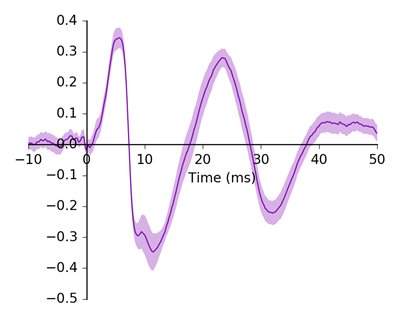Auditory Brainstem Responses to Natural Stimuli

We are developing methods to measure how the auditory brainstem responds to natural speech.
Where do cognitive processes like selective attention first appear along the auditory pathway?
There are obvious differences between listening in a laboratory versus a cocktail party. Out of necessity, experiments often sacrifice realness for experimental control, reducing lively gatherings to clicks, beeps, and short spoken sentences. One recent development that allows us to present almost any natural stimulus and still derive a stereotyped neural response is the temporal response function (TRF). Based in system identification, the TRF has been used to look at cortical responses to competing speech streams and audio-visual speech stimuli.
We are working to adapt the TRF so that it can be used to measure auditory brainstem responses to ongoing natural sounds—something that has never been done. This is difficult because while cortical responses are slow (the bulk of their energy is below 30 Hz) and driven mostly by the sound’s envelope, the auditory brainstem response is quite fast, with discrete waves occurring before 7 ms post-stimulus, and is affected by the sound’s fine structure.
These new quantitative methods will open the door to a vast array of new experiments into how subcortical processing contributes to selective attention and how it is shaped by input from other sensory systems or from executive control areas. It may also allow unified clinical tests that combine behavioral tasks with measurement of subcortical and cortical processing.
